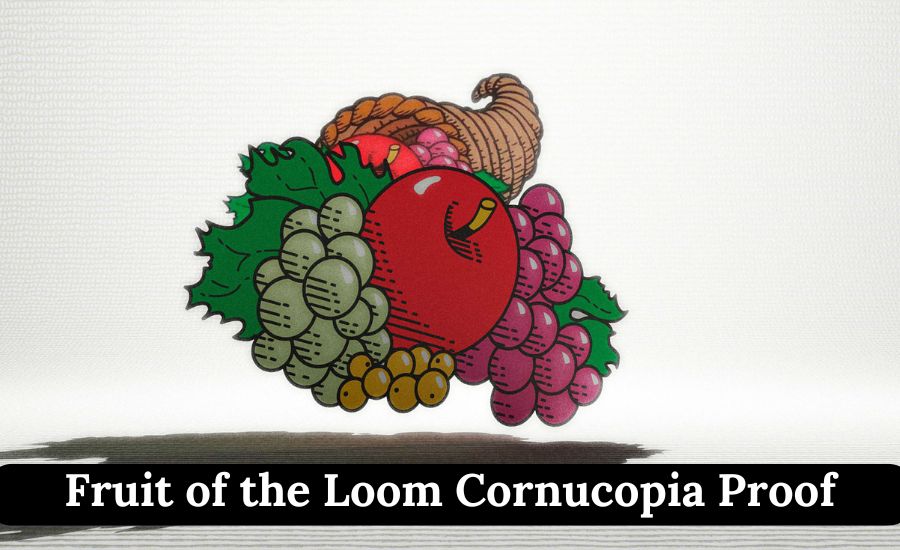Many people believe there is Fruit of the Loom cornucopia proof, with vivid memories of the brand’s logo featuring a cornucopia behind the fruits. But does this really exist? The Mandela Effect, a phenomenon where large groups of people recall something incorrectly, has made this claim popular. Fruit of the Loom insists their logo has never included a cornucopia, but the debate continues to spark curiosity.
At Vents Blogs, we’ll dive into the mystery of the Fruit of the Loom cornucopia proof, exploring what people remember and why this theory has become so widespread. Could it be that our memories are playing tricks on us, or is there something more to this iconic logo?
What is the Fruit of the Loom Cornucopia Proof?
The “Fruit of the Loom cornucopia proof” is a popular topic for many people who recall seeing a cornucopia in the brand’s logo. Many remember a horn filled with fruits behind the main logo. However, despite these strong memories, Fruit of the Loom has always said there was never a cornucopia in their design. This has led to a big debate among fans of the brand and others who are puzzled by the memory.
Could it be that our minds are tricking us, or did the company use to include this symbol? The Mandela Effect suggests that large groups of people may share false memories of certain things, like the “Fruit of the Loom cornucopia proof”. Many people online share their stories of remembering the logo differently, which has kept this debate alive.
The Mandela Effect and the Fruit of the Loom Cornucopia
The Mandela Effect is when many people remember something differently from how it actually happened. In the case of the Fruit of the Loom logo, a lot of people are convinced that there was a cornucopia behind the fruits. This group memory could be an example of the Mandela Effect in action. The name comes from people wrongly remembering Nelson Mandela’s death in the 1980s.
People all over the world feel sure that they saw a Fruit of the Loom cornucopia proof, even though no proof has ever been found to show it. Some believe that this shared false memory is a sign of the Mandela Effect. Others wonder if the cornucopia was never really part of the logo, but instead, our memories are simply being mixed up.
Has Fruit of the Loom Ever Used a Cornucopia in Its Logo?
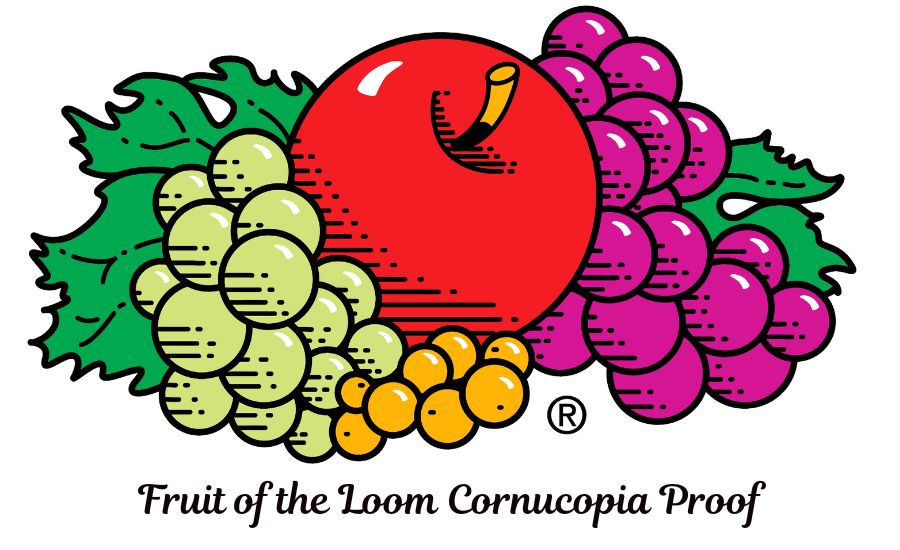
The company behind the Fruit of the Loom cornucopia proof brand insists that there has never been a cornucopia in their logo. Their design features a variety of fruits, such as apples and grapes, but no horn of plenty. This has surprised many fans who are sure they remember seeing the cornucopia. The confusion around this is a great example of how memory can sometimes be unreliable.
Some people think the cornucopia might have been part of a past advertisement or a different logo design, but official records and the brand’s history show no such symbol ever existed. This leaves many to wonder if the memory of the cornucopia is just a trick of the mind or something more.
The Mystery Behind the Fruit of the Loom Logo
The mystery of the Fruit of the Loom cornucopia proof has sparked curiosity for years. Many people still argue over whether the cornucopia was ever there. The logo is well-known for showing a variety of fruits, but the idea of a cornucopia being part of it adds an extra layer of mystery. Could this be something hidden in plain sight that we simply forgot?
Some say that the logo’s design may have changed over the years, but others argue that the cornucopia was never there at all. The more people discuss this, the more the mystery grows. Is there proof that the cornucopia was part of the original design, or is it just a false memory?
Why Do People Remember Cornucopia?
So why do so many people remember the Fruit of the Loom cornucopia proof? One possibility is that our brains fill in details that we believe are missing. If we see a bunch of fruits, it’s natural to think there should be a cornucopia behind them, since that’s the symbol of abundance.
This kind of memory trick happens all the time. Sometimes, our minds create images or details based on what we expect to see, even if they weren’t actually there. People who remember the cornucopia might have simply imagined it, thinking it made sense with the fruits in the logo.
Exploring the Power of Collective Memory: Fruit of the Loom Cornucopia
The Fruit of the Loom cornucopia proof memory shows the power of collective memory in shaping our perceptions. When many people share a false memory, it feels real to them, even if it’s not true. This is why so many people believe the cornucopia was part of the logo. Collective memory can affect how we recall certain things, and in this case, it’s the logo. The Mandela Effect highlights how group memories can shape our reality, even if the facts don’t match.
“Fruit of the Loom cornucopia” this proof powerful phenomenon explains why some people still swear that the cornucopia existed in the logo, despite the company’s official statement.
Fruit of the Loom Cornucopia Proof: What Does History Say?
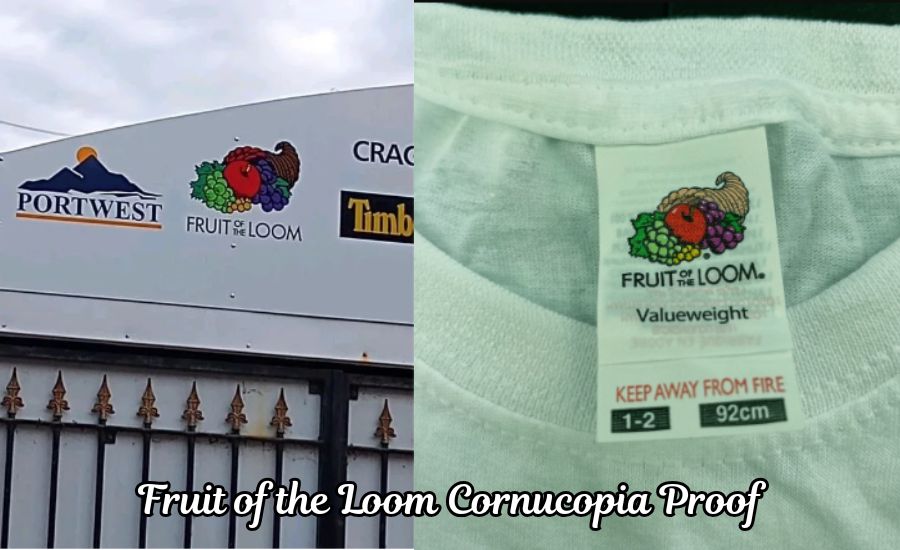
Looking at the history of the Fruit of the Loom logo shows no sign of a cornucopia ever being part of it. The company’s archives and logo designs never included the symbol of abundance. Yet, the memory of the cornucopia continues to live on in many people’s minds. This gap between memory and reality has fueled the debate for years.
Though there is no historical evidence of Fruit of the Loom cornucopia proof, the continued belief in its presence shows how memory can create a different version of history. The lack of proof doesn’t stop the debate, making the Mandela Effect a fascinating phenomenon.
Exploring the Truth Behind Fruit of the Loom’s Logo
The truth behind the Fruit of the Loom cornucopia proof is simple: the brand has never used a cornucopia in its design. Despite what many people remember, the logo has always just featured a bunch of fruits. It’s interesting how a memory can be so vivid and widely shared, even if it’s not true.
Exploring this mystery shows how powerful memory can be. Even if the cornucopia never existed in the logo, the idea of it has become a part of the brand’s story for many people. This goes to show how powerful our minds can be in shaping the world around us.
How the Mandela Effect Connects to the Fruit of the Loom Cornucopia
The Mandela Effect is strongly tied to the debate about the Fruit of the Loom cornucopia proof. This phenomenon is all about how large groups of people can remember something differently than it really happened. In the case of Fruit of the Loom, many people believe the cornucopia was always part of the logo, even though the company says otherwise.
This is a great example of how the Mandela Effect works. People across the world share the same memory of the cornucopia, which makes them question reality. It’s an interesting puzzle that shows how our minds can sometimes distort memories, creating a collective false reality.
Is There a Hidden Cornucopia in the Fruit of the Loom Logo?
Some people believe there’s a hidden cornucopia in the Fruit of the Loom cornucopia proof, even though the company says there isn’t. This has led to many theories and discussions. Could there be a cornucopia that’s only visible to some people or in certain lighting? Or is it all just a case of mistaken memory?
The idea of a hidden Fruit of the Loom cornucopia proof adds a fun layer of mystery to the logo. Even if there’s no proof of it, people still like to imagine that it’s there, making this debate even more fascinating.
Exploring the Fruit of the Loom Logo Over Time
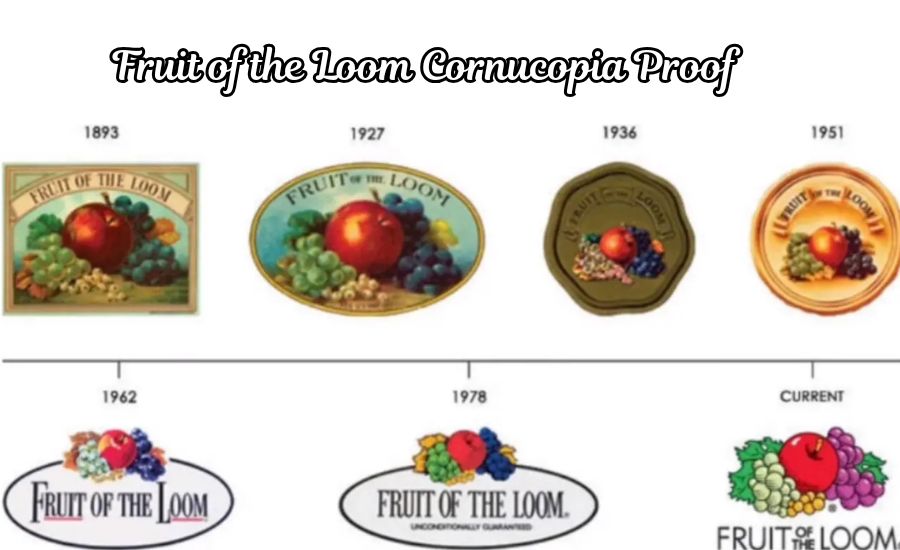
The Fruit of the Loom cornucopia proof has stayed mostly the same for many years, featuring fruits like apples and grapes. Some people wonder if the logo ever changed in the past, which might explain why they remember the cornucopia. However, the brand has always used the same basic design with no cornucopia.
Looking at the logo’s history can help us understand why people might remember it differently. While the design has stayed simple, the idea of a cornucopia behind the fruits may have been influenced by other logos or designs people have seen throughout their lives.
What Other Brands Have Similar Mandela Effect Myths?
The Fruit of the Loom cornucopia proof debate isn’t the only Mandela Effect myth in the world of logos and brands. Other well-known logos have also been remembered incorrectly by large groups of people. For example, many people believe the famous “Looney Tunes” logo was spelled “Looney Toons.” These shared false memories are part of what makes the Mandela Effect so fascinating.
Other brands like the Monopoly man and the Kit Kat logo have also been subjects of similar debates. The Fruit of the Loom cornucopia is just one of many examples of how people’s memories can sometimes be tricked into thinking things are different from reality.
You Should Know: Bishop Bakery Erick Schat’s
Why the Fruit of the Loom Cornucopia Debate Won’t Die
The debate about the Fruit of the Loom logo and the cornucopia continues to spark interest because of how many people remember it differently. It’s a popular topic because it ties into the Mandela Effect, where groups of people share false memories. The idea of a cornucopia behind the fruits in the logo has become a part of popular culture, which makes it difficult for people to let go of this memory, even when there’s no proof it was ever there.
Because so many people recall the Fruit of the Loom cornucopia proof, this debate keeps going. Every time someone discusses it, the mystery grows, and more people become interested in the strange phenomenon behind it.
Theories Behind the Fruit of the Loom Cornucopia Memory
There are several theories about why so many people believe the Fruit of the Loom logo included a cornucopia. One idea is that the cornucopia symbol, which represents abundance, fits so well with the image of fruit that it feels like it should be there. Another theory is that people might be confusing it with other similar logos, like the cornucopia used in other advertisements or products.
Others believe that it’s a simple case of the Mandela Effect. Fruit of the Loom cornucopia proof suggests that our minds collectively remember things in ways that don’t match reality, leading to shared false memories, like the one about the cornucopia in the logo. No matter the explanation, the memory of the cornucopia continues to thrive.
Could There Be a Fruit of the Loom Logo Redesign That Included a Cornucopia?
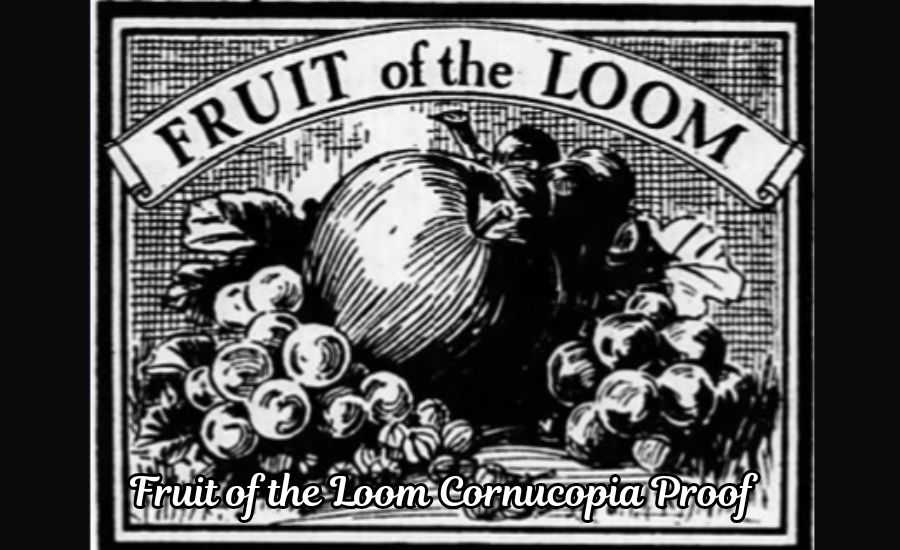
Many wonder if Fruit of the Loom cornucopia proof once used a cornucopia and later redesigned their logo. However, historical records of the brand’s logo show no sign of a cornucopia ever being part of it. Still, some people think that the company may have changed the logo at some point and forgotten about the earlier version.
Though there is no clear proof, the idea that a redesign once included a cornucopia remains a theory. It’s possible that some early versions of marketing materials may have featured the symbol, but there’s no solid evidence to back this claim. The ongoing mystery of Fruit of the Loom cornucopia proof has only added to the fascination surrounding the logo.
The Impact of the Mandela Effect on Brand Recognition and Memory
The Mandela Effect has had a significant impact on how we recognize brands and remember their logos. People are often surprised by the differences between their memories and reality, like with the Fruit of the Loom cornucopia proof. This shared false memory shows how the Mandela Effect can alter our perceptions of logos and brands.
In the case of Fruit of the Loom, this debate has changed the way many people view the brand. Even though the cornucopia was never part of the logo, the memory of it has affected how people remember the company’s identity. This shows how collective memory can shape the way brands are recognized in popular culture.
Conclusion
The mystery of the Fruit of the Loom cornucopia proof continues to fascinate many people. Even though the company insists that the logo has never included a cornucopia, countless individuals still remember it that way. This strange phenomenon is an example of how collective memory can shape our understanding of the past, even when there’s no proof to back it up.
Whether the cornucopia was ever part of the logo or not, the Mandela Effect has sparked many interesting conversations. It reminds us that memory isn’t always perfect, and sometimes our minds can create memories that aren’t really there.
Read Next: Green Tea Phytosome For Youth Co
FAQs
Q: What is the Fruit of the Loom cornucopia proof debate?
A: The debate centers around whether the Fruit of the Loom logo ever included a cornucopia behind the fruits. Many people remember seeing it, but the company insists it was never part of the logo.
Q: Why do people believe the cornucopia was in the logo?
A: Many people recall the cornucopia due to the symbol’s association with abundance, and it seems to fit naturally with the fruits in the logo.
Q: Has the Fruit of the Loom logo ever had a cornucopia?
A: No, official records show that the Fruit of the Loom logo has never included a cornucopia, despite what many people remember.
Q: What is the Mandela Effect?
A: The Mandela Effect is when a large group of people remembers something incorrectly, like the cornucopia in the Fruit of the Loom logo, despite no evidence supporting it.
Q: Could the Fruit of the Loom logo have changed over time?
A: While some theories suggest the logo might have changed, there is no proof that a cornucopia was ever included in the design.
Q: What does the Mandela Effect teach us about memory?
A: The Mandela Effect shows that memory can be faulty, and groups of people may recall things differently than they actually happened.
Q: Why is the Fruit of the Loom cornucopia memory so popular?
A: The memory is popular because it’s tied to a symbol of abundance, and many people feel strongly about what they recall, even without evidence to support it.
